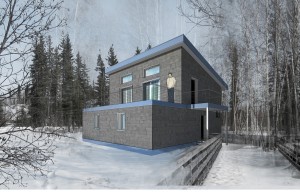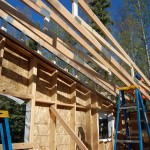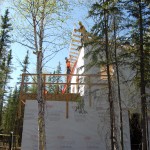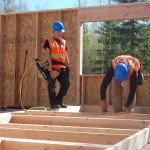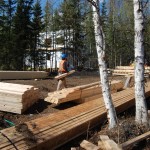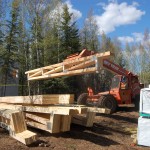Do you seek a different style of on-campus life? Do you want to know how to grow your own food? Are you excited about monitoring and reducing your energy consumption? Are you aware of your personal carbon footprint? If you answered yes to these questions, consider applying for residency for the 2012-2013 academic year at the UAF Sustainable Village!
By Cornerstone on June 15, 2012
The UAF Office of Sustainability is now accepting student applications for residency for the 2012-2013 academic year at the new UAF Sustainable Village. This opportunity is for students seeking a different style of on-campus life, wanting to know how to grow your own food and monitoring and reducing energy consumption.
The UAF Sustainable Village, UAF’s newest student housing, is a student-led and -driven initiative. Students have been integral to all stages of the process: from concept to design to construction. It is a demonstration of environmentally sustainable technologies in a residential setting and will provide hands-on experiential learning opportunities. Students will collect and disseminate information about sustainable building and living best practices, and encourage others to live in a more sustainable way.
The Sustainable Village is open to UAF students, sophomores through graduate. Students interested in living in the UAF Sustainable Village for the 2012-13 academic year need to complete this form and attach a signed UAF Sustainable Village Social Contract /Agreement. Selection is based on application and an interview with the Sustainable Village Committee.
Students interested in being part of the innovative, nationally recognized Sustainable Village and feel personally committed to sustainability, are encouraged to sign up. For more information visit the Sustainability Village website for more information or contact sustainability director Michele Hebert at mahebert@alaska.edu or 907-388-6085.
